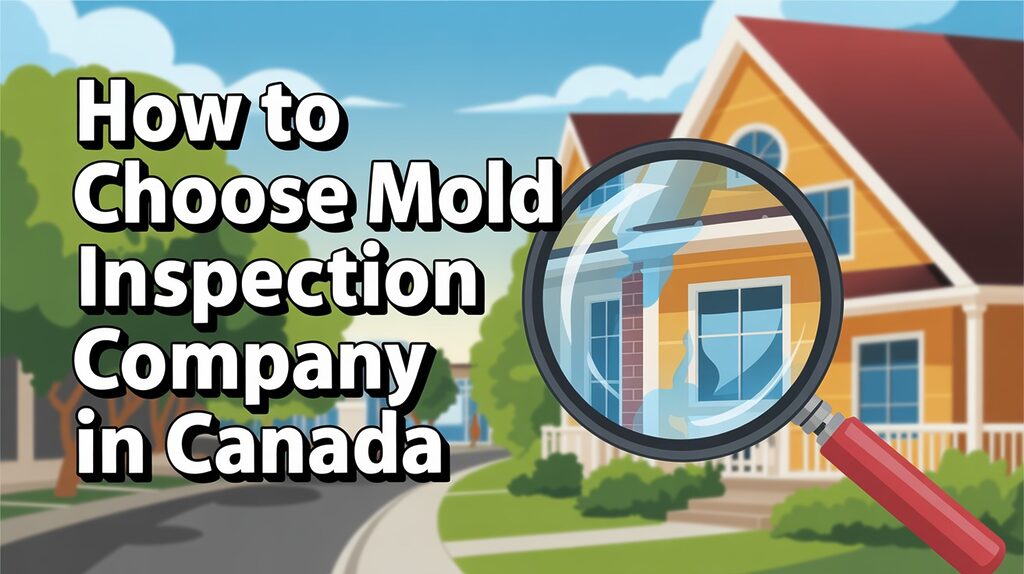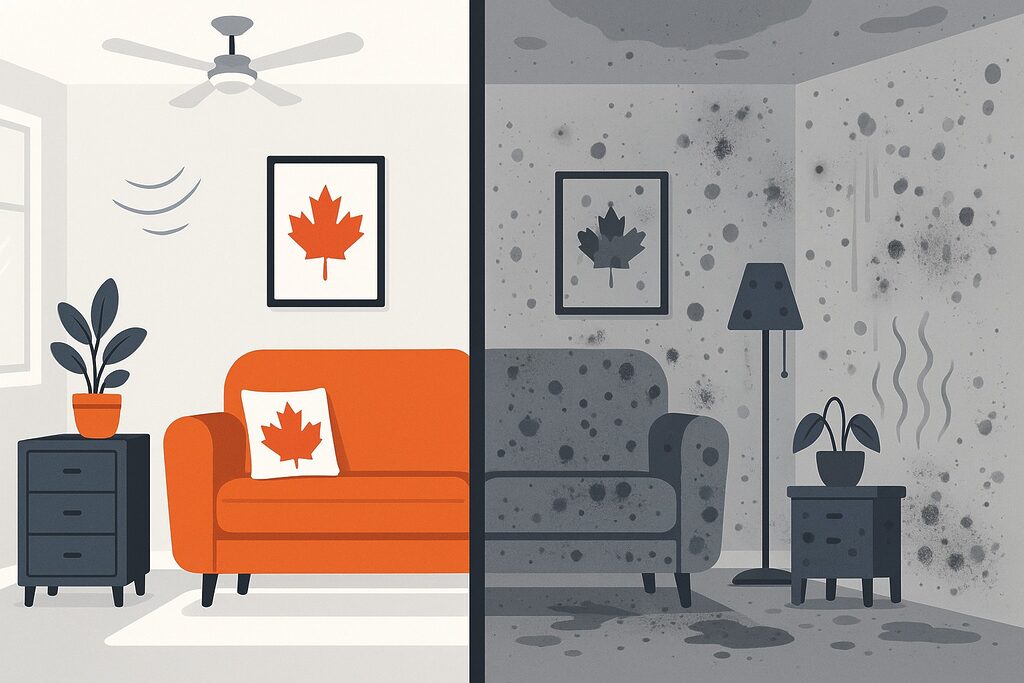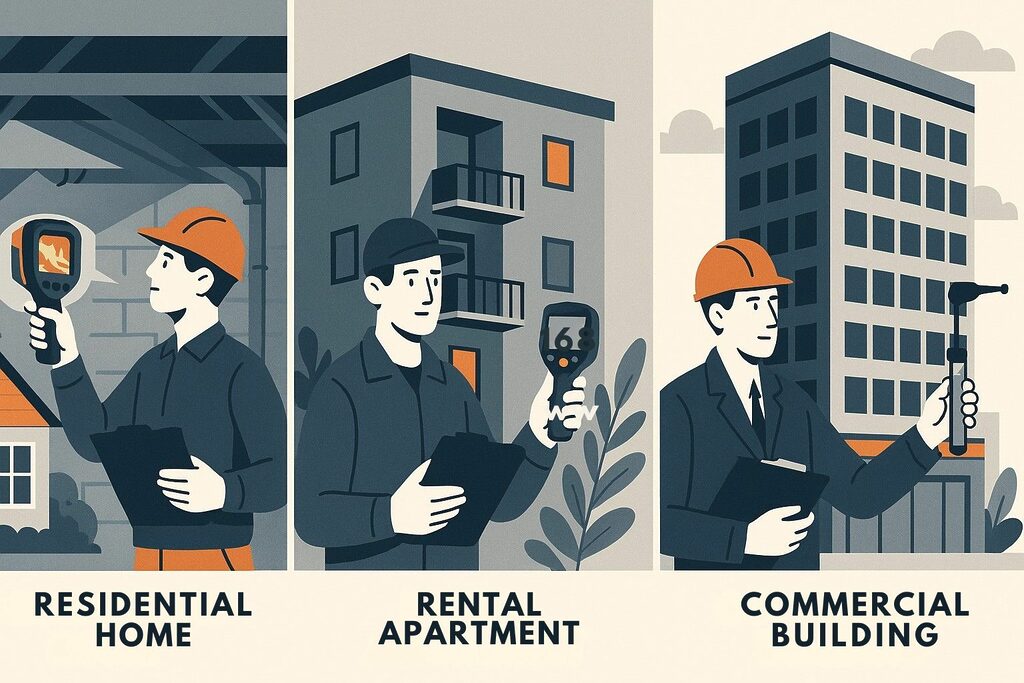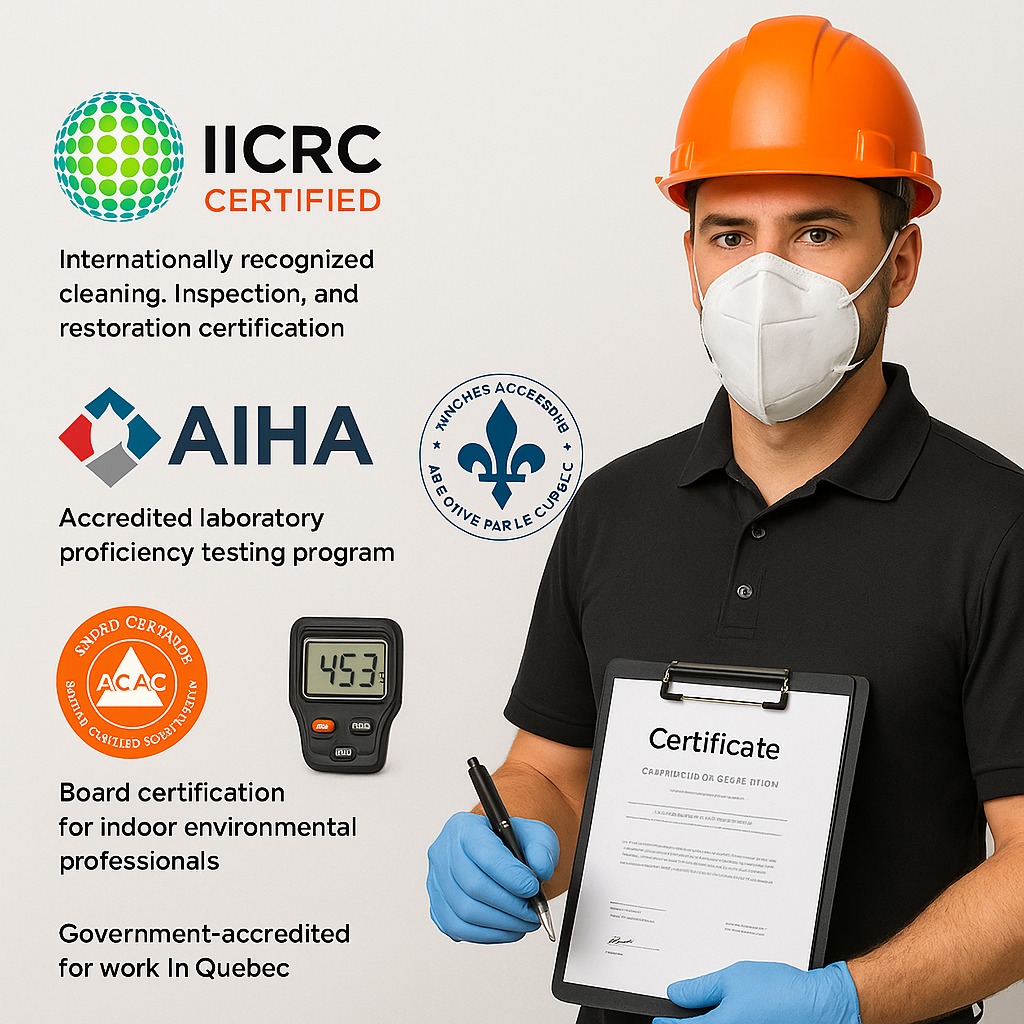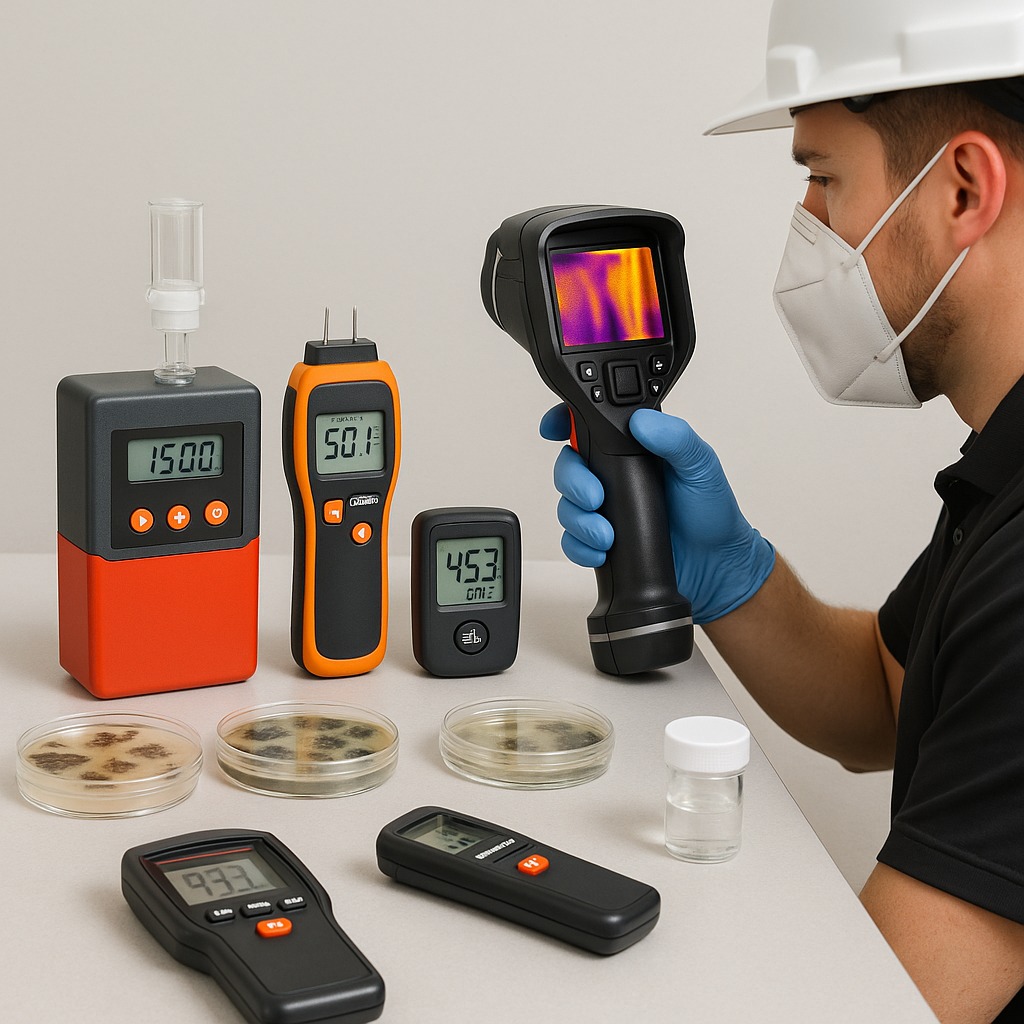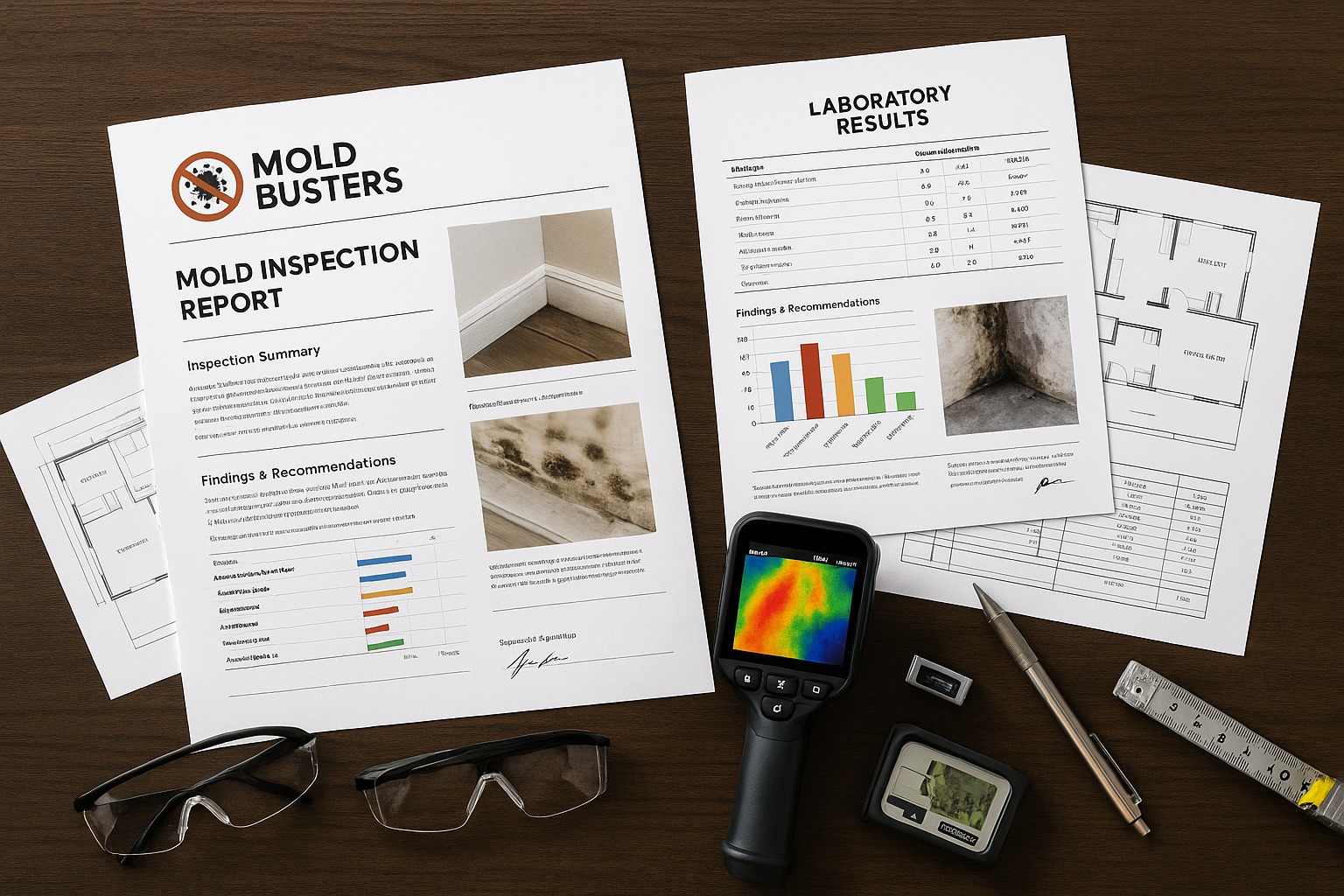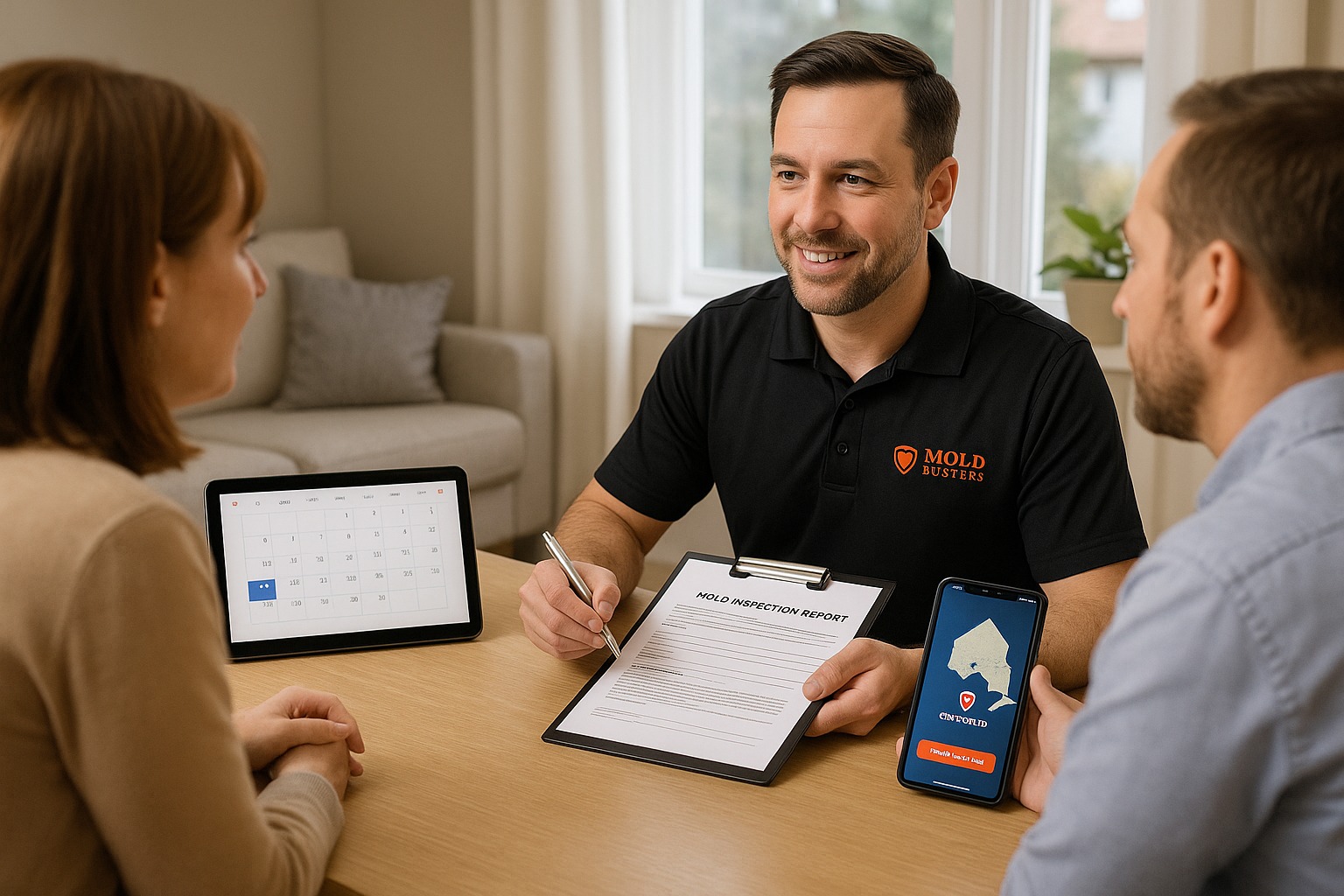Why Your Choice Matters
Poor mold inspections cost Canadian homeowners thousands in missed problems. Unqualified inspectors overlook hidden moisture sources or use outdated testing methods. The right company finds mold early, prevents health issues, and saves repair costs.
Canadian building codes vary by province. Local companies understand these differences and know common mold species in your area. They also understand seasonal patterns affecting mold growth across Canada’s diverse climate zones.
| Selection Factor | What to Look For | Cost Range (CAD) | Red Flags |
|---|---|---|---|
| Certifications | IICRC, AIHA, ACAC certified | No additional cost | Cannot provide proof |
| Residential Inspection | Air sampling, moisture testing | $350 – $600 | Visual only, no testing |
| Commercial Inspection | After-hours access, comprehensive sampling | $500 – $1,200+ | Limited availability |
| Lab Analysis | ISO/IEC 17025 accredited labs | Included in quote | Unaccredited labs |
| Insurance Coverage | Liability + professional indemnity | No additional cost | No insurance proof |
| Report Quality | Photos, lab results, recommendations | Same-day delivery | Basic visual report only |
| Service Conflict | Inspection-only companies | Transparent pricing | Free inspection + remediation sales |
Start With Your Province and City
Local mold inspection companies offer key advantages over national chains. They understand your provincial building codes, local climate conditions, and regional construction methods. Ontario homes face different challenges than British Columbia properties.
Provincial Regulations
Ontario has minimal mold inspection requirements while other provinces mandate specific certifications. Local companies navigate these rules effectively.
Climate Factors
Prairie provinces deal with dry conditions and humidity changes. Coastal areas face constant moisture challenges. Local inspectors know these patterns.
Find local companies through provincial trade associations, municipal health departments, and online directories. Check service areas to ensure coverage for your location.
Match the Inspector to Your Property Type
Different properties require specialized inspection approaches. Residential homes need thorough basement and attic checks. Commercial buildings demand after-hours scheduling and extensive sampling.
Residential Properties
Home inspections focus on moisture-prone areas like basements, bathrooms, and attics. Inspectors check HVAC systems, windows, and foundation walls. They look for water damage signs and test indoor air quality.
Rental Properties
Tenant-landlord disputes require neutral third-party inspections. Choose companies with no remediation services to avoid conflicts of interest. Request detailed photo documentation and lab results.
Learn more about mold inspection for renters and tenant rights.
Commercial Buildings
Large buildings need comprehensive sampling plans and after-hours access. Inspectors coordinate with building managers and follow workplace safety protocols. Industrial facilities require additional safety certifications.
Read about business mold inspection protocols for detailed commercial guidance.
Compare Pricing and Service Options
Mold inspection costs vary widely across Canada. Small residential checks start around $300-400. Comprehensive testing for large properties can exceed $1,000. Get itemized quotes breaking down all charges including sampling, lab analysis, and travel fees.
Residential Pricing
$350-$600 for standard homes
$800-$1,200 for extensive testing
Commercial Pricing
$500+ starting price
Increases based on building size and complexity
Request detailed quotes from at least three companies. Compare testing methods, reporting timelines, and follow-up services. Cheaper isn’t always better if the inspection misses critical problems.
Learn more about mold inspection costs and budget planning.
Verify Essential Certifications
Look for IICRC (Institute of Inspection, Cleaning and Restoration Certification) credentials as the gold standard. IICRC-certified inspectors complete rigorous training and continuing education.
IICRC Certification
Industry gold standard with rigorous training requirements and continuing education mandates.
AIHA & ACAC
Additional credentials in indoor air quality and specialized mold assessment techniques.
Provincial Licensing
Requirements vary by province. Some require specific permits while others have minimal requirements.
Insurance Coverage
General liability and professional indemnity insurance protect you during inspections.
Check certification validity through official websites. Legitimate certifications include expiration dates and verification numbers.
Understand Testing Methods and Equipment
Professional mold inspections use multiple testing approaches. Air sampling measures airborne spore concentrations. Surface sampling tests visible growth and suspicious stains. Bulk sampling analyzes building materials for hidden contamination.
Advanced Equipment
Thermal imaging cameras detect moisture behind walls without destructive testing. Moisture meters measure water content in building materials. These tools identify problem areas before visible mold appears.
Laboratory Standards
Samples should go to labs certified under ISO/IEC 17025 standards. Accredited labs provide reliable results and detailed species identification.
Explore our air sampling guide for detailed testing method information.
Red Flags to Avoid
Avoid companies offering free inspections as sales tools for expensive remediation services. Be cautious of high-pressure tactics or scare techniques. Question extremely low prices that seem too good to be true.
Professional inspectors provide objective assessments without emotional manipulation and maintain proper documentation.
Review Sample Reports and Documentation
Professional reports include detailed findings, photo documentation, and clear recommendations. Good reports explain moisture sources, identify problem areas, and prioritize corrective actions.
Laboratory Results
Species identification and spore counts with clear health risk assessments
Detailed Documentation
Moisture readings, temperature measurements, and humidity levels with photos
Ask for sample reports during selection. Compare quality between companies and choose comprehensive documentation providers.
Next Steps: Schedule Your Inspection
Contact multiple companies for quotes and compare responses. Professional companies return calls promptly, answer questions thoroughly, and provide detailed estimates.
Preparation Tips
Schedule during optimal conditions when possible. Prepare your property by clearing access to all areas. Document visible problems with photos before inspection.
We serve Ontario and Quebec with certified inspectors, transparent pricing, and comprehensive reporting.
🤔 Frequently Asked Questions
How much does mold inspection cost in Canada?
Residential inspections typically cost $350-$600 for standard homes. Larger properties or extensive testing can cost $800-$1,200. Commercial inspections start around $500 and increase based on building size.
What certifications should I look for?
IICRC certification is the industry standard. AIHA and ACAC certifications provide additional credibility. Always verify certifications are current through official websites.
How long does a mold inspection take?
Most residential inspections take 2-4 hours depending on home size. Commercial properties may require full days or multiple visits. Simple visual inspections take less time than comprehensive testing.
Should I choose companies that also do remediation?
Many experts recommend using separate companies for inspection and remediation to avoid conflicts of interest. This ensures objective assessments focused on your needs.
Do I need testing if I see visible mold?
Visible mold confirms you have a problem, but testing identifies species types and contamination extent. Testing helps determine proper remediation methods and verifies cleanup effectiveness.
Additional Resources
For more detailed information, visit our comprehensive resource library covering testing methods, costs, and health considerations:
Health Information
Health risks of mold exposure and symptom identification
Testing Guides
DIY vs professional testing comparison
Home Buyers
Mold inspections for new home buyers essential guide
Prevention Tips
Signs of mold in homes and early detection

